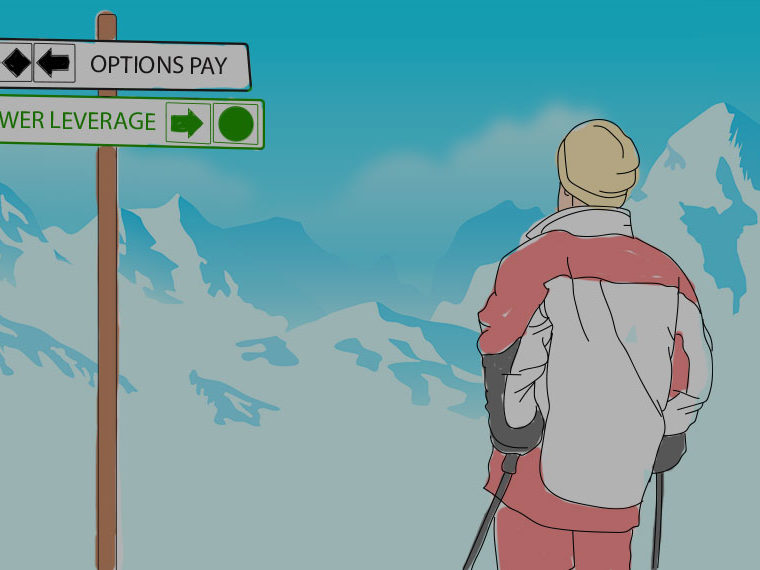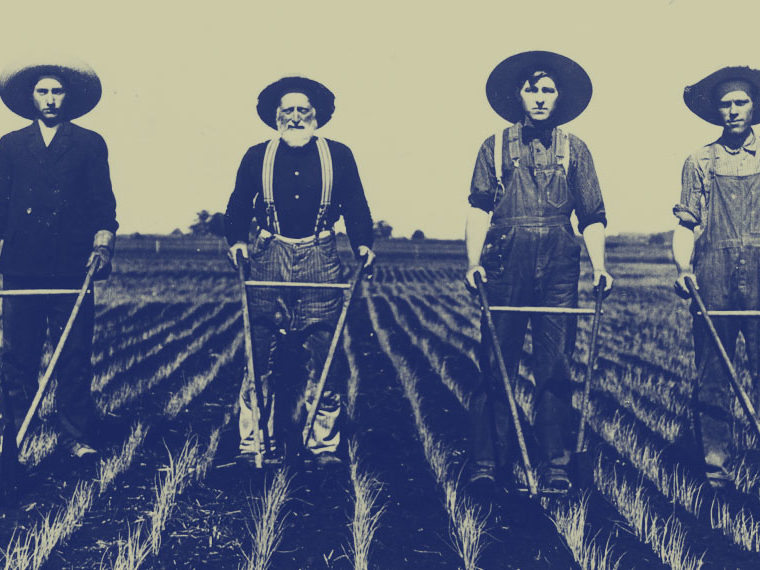Researchers struggle with faulty study designs, flyspecking each other’s work, re-arguing decades of debate about jobs and income
If you’re like most college graduates, you took an intro to economics class that left you with at least this single and powerful concept: supply and demand are lines that cross on a graph at a magical center point known as price equilibrium. When our politicians and others say that “the market will sort it out,” a belief that verges on deity worship for some, this foundational tool of economics is often what they have in mind: buyers and sellers deciding, in the rough-and-tumble of free enterprise, how much of, and at what price, a good or service will change hands.
Theoretically, the tool should work to set prices in that most important of markets, the one for human labor. Microeconomics 101 suggests that supply and demand for labor moves just like the forces around widgets, smoothly up and down, until they intersect. Price equilibrium is the wage at which the number of jobs exactly matches the number of workers willing to labor at that price.
Opt In to the Review Monthly Email Update.
According to the sketch above, mandating a minimum wage above that market-determined sweet spot should put people out of work. The higher wage reduces the number of work hours employers are willing to fund, by an amount that depends on where along that demand line the minimum wage sits. Above a certain level, a minimum wage would reduce demand so much that income losses to people who lose jobs or hours would exceed the pay gains other workers get from the higher wage floor.
In the real world, however, mandated minimum wages don’t necessarily lead to job losses. There are theories as to how an innocuous jobs effect might be possible, and we’ll go into those more below.
― Edward Leamer, UCLA Anderson School of Management.
More on Leamer below.
But the research evidence of what actual minimum wage requirements do to job numbers goes both ways; many studies find that minimum wage laws reduce employment, and many other studies on the exact same laws find they have little or no effect on jobs. Some 60 years and hundreds of research papers from prestigious universities, government agencies and private organizations have created little consensus on the subject, academic or otherwise. Just last year, separate Seattle minimum wage studies by researchers at the University of Washington and the University of California Berkeley suggested polar opposite effects.


Minimum Wage Tracker
This map helps show why sorting out the controversy is urgent. Each of those green states has mandated, mostly in the past two years, minimum wages at rates above the federal $7.25 an hour. Hover over those states to see the vast discrepancies that now exist in minimum wages across the country. Click on any of the circular states to see how dozens of municipalities have taken minimum wages up even further than their state legislatures chose to.
Many of these newer minimum wage laws include provisions for automatic increases over the next few years. By 2022, 17 percent of Americans will live in a city or state with a $15 minimum wage. (Change could come far more rapidly in the wake of Amazon’s decision to boost pay to $15 an hour for all its workers November 1. The move will affect 250,000 existing Amazon employees and another 100,000 or so seasonal workers this holiday season and beyond.) If the Fight for $15 movement continues to gain support, more cities and states will adopt higher minimum wage laws, even if the federal government and some states stay stuck at $7.25.
Do Minimum Wage Laws Reduce Employment?
In recent years, the minimum wage debate has been reduced to pure economics. Do rate hikes cut job hours? hurt small businesses? boost consumer spending? cause prices to rise?
Are these even the right questions? The debate wasn’t always so data-centered. True, job-killing predictions predated the first minimum wage. But raising pay was often cited as the right, humanitarian and even patriotic thing to do, even if some people had to suffer economic consequences.

— President Theodore Roosevelt, addressing a convention of the National Progressive Party, August 6, 1912
— President Lyndon B. Johnson, in a ceremony marking effective date of a minimum wage hike to $1.40 an hour, February 1, 1967

By the 1970s, moral arguments were less prominent. With inflation reducing the value of federal minimum wage paychecks almost every year since, supporters of higher pay turned to dollars-and-cents arguments. Today, both sides rely on data-based research to demonstrate the economic advantages of their positions.
But consensus remains elusive.

— House Speaker John Boehner, responding to President Barack Obama’s State of the Union call for an immediate and regular increases in the federal minimum wage, February 14, 2013
— President Barack Obama, responding to Republican opposition that effectively stalled his plans for minimum wage increases, October 3, 2014

Here, we attempt to explain why there is still no consensus on this single question that economists have grappled with for half a century, and the most populated cities and states in America now find critical to their futures. In this primer, we bring forward the most pertinent and promising research on the minimum wage and employment to show the facts both determined and alleged. And we describe the limits of data sets, flaws in control group designs and political influences on both camps that keep the debate raging.
As our guide, we’ve enlisted Edward E. Leamer, a UCLA Anderson economist and hardcore datahead. Leamer walks us through the controversies and confounding contradictions in this field, using his own research experience and talent for skepticism to find truths amid the fracas. He’s not a fan of minimum wage hikes, but he’s agnostic in his reviews of minimum wage research.
(continued below)
About Ed Leamer

- For 17 years directed the UCLA Anderson Forecast, a research group that provides unbiased economic forecasts on California and the U.S.
- Earned some fame in the aftermath of the 2008 financial crisis when the world realized he had (repeatedly) warned that a housing bubble was going to tank the economy.
- Says some (vague) level of minimum wage is good policy. But he’s happier talking about how better education would lead to bigger paychecks.
- Produced critical research for a famous lawsuit involving Apple and Google, in which he found that the company agreements not to recruit each other’s software engineers actually suppressed market wages. As an expert witness in a similar case involving Duke University and University of North Carolina professors, he also found wage-suppressing effects.
(continued)
It’s All Flawed
According to Leamer, “There’s no piece of work here that can’t be criticized.” Including, Leamer hastens to add, the very study he’s leading. He can attest personally to the difficulties of designing a definitive research project in this field, even with a clever new way to approach the questions.
And he is keen to show us other, perhaps more enlightening, ways to think about the labor market than through the lens of that theoretical supply-and-demand model.
A Novel Approach, Old Issues
Leamer’s ongoing research with UCLA’s Till Von Wachter and Frederick Zimmerman encapsulates several issues that have plagued minimum wage studies for decades. The team originally was tasked with identifying the economic impact of recently mandated minimum wage hikes in Los Angeles, where the rate is rising incrementally to $15 an hour by 2023 (from $9 an hour in 2006).
At first, the stagnant minimums just beyond L.A.’s borders, where the state minimum wage was stuck at $9, offered an obvious control group. Efforts to cross a street to move a business outside L.A.’s jurisdiction would support the conclusion that the rate hike was costing jobs. Unlike moving to another state, renting across the street is a relatively cheap and easy way to avoid the higher wages. But the State of California quickly eliminated that research design by enacting its own series of minimum wage increases that generally mimicked those in L.A.
Leamer & Co.’s mission then broadened to estimating minimum wage effects in the entire state, including L.A. But now they needed to devise a new control group; ideally, one that could withstand criticism from experts who believe minimum wage laws kill jobs, as well as those who think their effects are innocuous at worst. So far, no one has found such a universally accepted research design.
Leamer’s team took a novel approach. Their study takes advantage of vast differences in average earnings among California counties, which they demonstrate with this color-coded map in their working paper.
Ed Leamer: “The problem is that all of California is subject to the same rate hikes. It’s like everybody in society took the same drug and we’re trying to tell what the impact is. It’s impossible. But if you can show the different impacts in different circumstances, it can lead to some conclusions.”
If the minimum wage hikes were reducing employment, the researchers hypothesized, we should see bigger job losses after a rate increase in the above map’s blue and yellow counties, where average worker earnings were far lower than red county earnings. Those low-earning counties have higher concentrations of minimum wage workers.
But even Leamer is skeptical of his team’s preliminary findings: dramatic, double-digit, job cuts at fast food and full service restaurants following minimum wage hikes. Although he believes the broader conclusion — that the wage hikes are reducing employment — he says the numbers are too large to be true.
He’s working on yet another model, possibly involving a comparison of minimum wage hike effects in physician offices, where there are few minimum wage workers; and restaurants, where a high percentage of the workforce earns minimum wage.
U.S. Market Wages Are Cheap
Some 1.8 million Americans earn at or below the federal minimum wage, in jobs ranging from food prep to health care support to hard labor.
The orange line shows how these workers have grown poorer over the past 50 years as inflation rose faster than the actual minimum wage.
In actuality, millions more Americans are affected by minimum wage laws because they live in one of the states, or in a municipality, that has mandated a higher minimum wage. Pew Research Center estimates that some 61 percent of the nation’s working age population lives in these places. Also, any minimum wage hike tends to have a bump-up effect on paychecks for low-skilled workers who make slightly more than minimum wage. They often get pay increases, too, possibly because employers are reluctant to give raises to only their lowest-paid employees. This bump-up effect makes any minimum wage hike enormously influential for spending power.
The Bump-Up Effect
Regardless of whether minimum wage hikes reduce overall employment, they undeniably create bigger paychecks for many low-wage workers, including workers who make slightly above the minimum wage. One recent large-scale study found that workers earning up to $3 above minimum wage got raises when minimum wage levels were increased. This bump-up effect, some economists believe, makes the poverty-fighting potential of any rate hike far greater than is immediately apparent.
Consider how a raise that tracks a minimum wage earner could greatly affect the wealth status of a worker who was ineligible for an automatic increase.
A worker earning $8 an hour working 40 hours, 52 weeks a year, grosses $16,640 a year. That’s just below the poverty threshold of $16,895 for a single parent in 2017. Say that worker is in a state that’s raising its minimum wage to $9 an hour from the federal minimum of $7.25. The required change would give the $8 an hour worker a 12.5 percent raise, while raising the pay of the presumably less valued co-worker by twice that percentage.
If the worker’s employer decides to give everyone in her unit the 24 percent raise that minimum wage workers will get, her hourly pay will increase to $9.92, and her gross annual pay rises to $20,634.
If her pay continues to rise naturally, as another large study by the U.S. Census Bureau suggests it will, her earnings will quickly surpass the estimated $21,936 maximum allowable to receive SNAP benefits.
Opponents to minimum wage hikes point out that pay raises for some do not necessarily mean better lives for low-wage workers generally. When a company boosts pay for some workers up to a new required minimum, it may cut hours or jobs for other employees to cover the costs. It’s this unsettled question — how do minimum wage hikes affect overall work hours? — that keeps the policy debate going.
What’s That Work Out To?
| $7.25/hour | $15,080 |
| At $ 8.25 | $17,160 |
| At $ 8.75 | $18,200 |
| At $ 9.25 | $19,240 |
| At $10.25 | $21,320 |
| At $15.00 | $31,200 |
Poverty threshold for single parent: $16,895 Estimated maximum earnings allowed for SNAP benefits (federal food assistance): $21,963
Dueling Data
Contradictory findings, even by economists analyzing the same data sets, have been the frustrating norm in this field since David Card first proposed in the 1990s that a New Jersey minimum wage hike didn’t actually put people out of work. A pattern followed: a respected researcher publishes an important minimum wage and employment study, and another respected researcher follows with a direct take-down of its findings. The work has created protracted debate and dueling findings among the field’s top experts.
Busy Economists Take Time Out to Write Letters to the Editor to Debate a Minimum Wage Study — from 1994
“The most accurate and comprehensive employment data available…confirms our findings.”
David Card, Letter to the Editor of the Washington Post, July 7, 2017
“My paper with William Wascher of the Federal Reserve Board demonstrated that the central finding from the original Card-Krueger study…was wrong.”
David Neumark, Letter to the Editor of the Washington Post, July 14, 2017
Who’s Who
 David Card and Alan Krueger set off a wave of research in early 1990s with a study that defied conventional wisdom among economists by finding no job losses from a minimum wage hike in New Jersey. The study marked a turning point in the field as economists sought — and still seek — to replicate or debunk its central finding that a mandated minimum wage can have little or no ill economic effects. The work remains seminal in the field, although the validity of some data used in it has been questioned.
David Card and Alan Krueger set off a wave of research in early 1990s with a study that defied conventional wisdom among economists by finding no job losses from a minimum wage hike in New Jersey. The study marked a turning point in the field as economists sought — and still seek — to replicate or debunk its central finding that a mandated minimum wage can have little or no ill economic effects. The work remains seminal in the field, although the validity of some data used in it has been questioned. David Neumark and William Wascher are the loudest voices among economists whose studies find minimum wage hikes cause job losses. Their multiple publications include academic critiques of studies with contrary findings and editorials in the popular media opposing minimum wage increases.
David Neumark and William Wascher are the loudest voices among economists whose studies find minimum wage hikes cause job losses. Their multiple publications include academic critiques of studies with contrary findings and editorials in the popular media opposing minimum wage increases. Sylvia Allegretto and Michael Reich produced multiple studies with other researchers on recent city and state minimum wage increases, including reports on Seattle and Los Angeles. None found seriously detrimental effects on employment.
Sylvia Allegretto and Michael Reich produced multiple studies with other researchers on recent city and state minimum wage increases, including reports on Seattle and Los Angeles. None found seriously detrimental effects on employment. Jacob Vigdor was principal investigator on a 2017 study that found Seattle minimum wage hikes cost workers about $125 a month because employers responded by cutting work hours. Findings induced righteousness from job-loss believers and incredulity from job-loss skeptics, as well as a lot of headlines in popular and nerd press. The study was co-authored by Ekaterina Jardim, Mark C. Long, Robert Plotnick, Emma van Inwegen and Hilary Wething, all from the University of Washington.
Jacob Vigdor was principal investigator on a 2017 study that found Seattle minimum wage hikes cost workers about $125 a month because employers responded by cutting work hours. Findings induced righteousness from job-loss believers and incredulity from job-loss skeptics, as well as a lot of headlines in popular and nerd press. The study was co-authored by Ekaterina Jardim, Mark C. Long, Robert Plotnick, Emma van Inwegen and Hilary Wething, all from the University of Washington. Arindrajit Dube and Ben Zipperer are at the forefront of new techniques for large-scale minimum wage studies and synthetic control groups. Their findings show little or no negative effects on employment, but are hotly disputed by Wascher et al.
Arindrajit Dube and Ben Zipperer are at the forefront of new techniques for large-scale minimum wage studies and synthetic control groups. Their findings show little or no negative effects on employment, but are hotly disputed by Wascher et al.In Search of the Perfect Control Group
Much of the controversy in this field boils down to disagreements over research study designs. In particular, the control group selection in any minimum wage study is likely to spark a hot debate, no matter what method the researchers used to devise it.
Ideally, a control group mimics the experimental group in every way except for whatever treatment is being measured. The standard approach for empirical economics calls for taking pay level and employment measurements before and after a minimum wage event, then comparing those measurements to an unaffected control group. In a perfect set-up, only the minimum wage differences could lead to different job and wage trends in the experiment and the control group. But in the real world, no two geographic locations have identical employers or workers or economies, and each of those factors affects jobs regardless of minimum wages.
The earliest studies compared data from a state that raised minimum wages to data from a nearby state that didn’t. But take a look at where those rate-raising green states and those federal-level orange states sit on a map. Is the economy of California really comparable to that of nearby Utah or Idaho?
Note that the $7.25 minimum wage states are clustered in places with fewer unionized workers. Some of those regions have particularly high rates of migrant and immigrant workers. Employment trends vary by state and region, largely for reasons that have nothing to do with minimum wage events.
For many years, researchers have manipulated these control groups to weed out factors that don’t equally affect employment in both locations. But there are huge differences among experts over how data from those orange locations can justifiably be manipulated.
Oh, Yeah?
In April 2011, Allegretto, Dube and Reich publish a study finding insignificant job losses for teen workers following minimum wage increases. Neumark and Wascher follow in January 2013 with a study aimed at debunking Allegretto’s findings, claiming her team threw out valid data when devising its control groups. Allegretto’s group publishes a rebuttal to the rebuttal in February 2017, arguing that Neumark and Wascher’s approach does not account enough for differences between those orange and green states. Not surprisingly, the two camps draw contradictory conclusions.
Synthetic Controls
As researchers struggle to find a universally accepted model for these studies, some econometricians are building artificial control groups to substitute for real-life geographic areas.
See all those obscure place names on the map below? That’s a sample of localities with stagnant minimum wage rates in recent years.
When data from those counties is combined and weighted variably, it creates an economy very similar to Seattle’s, according to the UC Berkeley researchers who developed this synthetic control group. In other words, employment trends of Walla Walla-Carbon-Snohomish-and-42-other-counties combined should be the same as Seattle’s would have been without recent minimum wage hikes to $13 an hour, and as it moves to $15 an hour.
Using this comparison, the study concludes that Seattle’s minimum wage did not lead to job losses.
Of course, synthetic control groups have their critics too, including Leamer.
Imperfect Data Sets
The University of Washington’s Seattle minimum wage study — the one that said Seattle lost lots of jobs from the rate hikes — illustrates another obstacle to credible findings in this field.
These researchers used individual pay records to see if low-wage workers lost jobs when the minimum wage rose.
Theoretically, this was an improvement over data sets from past studies, which, for lack of anything better, usually relied on some overall wage and payroll data that lumped together employees earning minimum wage with other workers.
But the UW data set had shortcomings too: it did not include data from employers with multiple locations that are believed to employ some 40 percent of Seattle’s low-wage earners. So, mom-and-pop retailers were counted, but McDonald’s franchises and the like were not.
Seeking Credibility with the Big Picture
Now that dozens of locations are mandating minimum wages above the federal level, researchers have enough data to conduct larger studies. Rather than try to deduce effects from one or a series of rate hikes at a single location, these studies use data from multiple locations over longer periods of time.
Two large-scale studies creating buzz conclude that minimum wage increases don’t lead to job losses.
A study led by University of Massachusetts Amherst economists looks at 137 state-level minimum wage increases over 37 years. The authors found that rate hikes boosted wages for both minimum wage earners and workers earning slightly above minimum wage.
Two U.S. Census Bureau economists looked at individual wage data from more than 75,000 households over 22 years. They concluded that wages grow for a worker affected by a minimum wage hike, both at the time of the rate change and over many years to follow.
Self-Serving Advocates
Opinionators in this field often attack the credibility of studies they don’t like by pointing out biases of the institutions that support them.
Job-killing results are applauded by business groups, such as the National Restaurant Association, that tout the higher unemployment effect as bad for the economy. Their members set wages for hundreds of thousands of Americans at the lowest legally allowed minimum.
Labor organizations, like Service International Employees Union, promote studies that find minimum wage hikes create positive changes for workers and the economy. This union was a driving force in getting $15-an-hour minimum wages passed in cities that include Los Angeles and Seattle. But per SIEU request, the new laws made its own dues-paying members ineligible for the higher minimum wage, arguing that they might want to negotiate lower-than-minimum-wage pay in exchange for better benefits.
| DIFFERENT BAGGAGE | CONTRADICTORY FORECASTS |
| Beacon Economics, underwritten by Los Angeles Chamber of Commerce | Harsh slowdown in job growth ultimately hurting low-wage workers |
| Economic Roundtable, underwritten by the Los Angeles County Federation of Labor, AFL-CIO | Creates lots of jobs and massive economic boost |
| Institute for Research on Labor and Employment, UC Berkeley, previously produced numerous studies showing economic benefits from hikes, including one for Los Angeles mayor | Insignificant job losses; significant boost to low-wage workers |
High Stakes in L.A.
If a minimum wage hike is actually bad for Seattle jobs — and it’s a big if ― a recently approved increase would seem disastrous for Los Angeles.
Unlike Seattle, where some 80 percent of workers earned more than $15 an hour before the recent minimum wage hikes, nearly 38 percent of Los Angeles workers are in jobs that pay the legal minimum.
The City of Los Angeles funded three studies on the potential economic impact of increasing its minimum wage. There’s a finding here for whatever side you want to take.
Same Question
How will L.A.’s proposed minimum wage hikes affect employment and the city’s economy? (L.A. has been incrementally increasing its minimum wage from $9 in 2016, with plans in place to hit $15 per hour by July 2021.)
Monopsony vs. That Classic Labor Curve
Why wouldn’t minimum wage hikes kill jobs, as that classical labor curve predicts? Recent research points to monopsony, a sort of monopoly whereby the business has buying power over labor rather than selling power over buyers. Monopsony could be keeping wages lower than an absolutely mobile work force would produce, meaning employers forced to pay a higher minimum wage don’t feel as much pain as theory would suggest.
Monopsonists can set lower wages because they have little or no competition from other employers for the workers they need, like in a rural town where a prison is the only major employer. Monopsony also thrives in fields where non-compete agreements keep workers from leaving one job for a better paying job at a competitor. In cities, employers gain monopsony power when they don’t compete for labor via wages, that is, they pay the same low rates. Economists agree that monopsony can significantly reduce the wage floor.
Monopsony at Work
A study in the Harvard Law Review finds that median wages for the U.S. labor market as a whole would be $41,000–$92,000, as opposed to the current $30,500, if there were no monopsony effects. Employment is 5 to 18 percent less than it would be in a perfectly competitive market, according to the findings.
Consider nursing, an occupation that’s generally in high demand. But really, demand varies greatly by geography, and so does the wage-setting power of hospitals. The fact that Boston’s numerous hospitals routinely offer signing bonuses and good pay to attract and keep nurses does not help the nurse who lives in a rural community 150 miles outside of a city. The one hospital in her community likely pays far less than the city hospital, and with few or no other needs for her skills within a realistic commute, she will likely take its job regardless.
The cumulative effect of these monopsonic markets dramatically suppresses overall nursing wages, according to the study. The authors estimate that the median annual pay for nurses, now $68,000, would rise to between $90,000 and $200,000 in a perfectly competitive market.
Too High, Too Low or Just Right?
Regardless of any employer’s unnatural wage-setting power, most economists believe the classical laws of supply and demand take over at some level. Theoretically, for example, a $100 minimum wage in Kansas would kill businesses there, because many don’t have profits enough to pay it, or the ability to pass on the costs to customers.
The ideal minimum wage counteracts the power of monopsony, leaves prices and employers’ profits relatively stable, and employs the workforce, while avoiding that doomsday scenario. Although there are questions about the rate of increases ― perhaps sharp minimum wage increases cut jobs but incremental changes don’t ― the fundamental disagreement here is over the amount. Is the market’s true equilibrium at $15 an hour? $7.25 an hour? Or is it some amount above or below either of those?
Perhaps one day a consensus on the research will decide. But municipalities aren’t waiting. Last week, the Port Authority of New York and New Jersey agreed to lift minimum wages for 40,000 airport workers to $19 over the next four years.
Featured Faculty
-
Edward E. Leamer
Director, UCLA Anderson Forecast; Chauncey J. Medberry Chair in Management; Distinguished Professor Emeritus of Global Economics and Management






